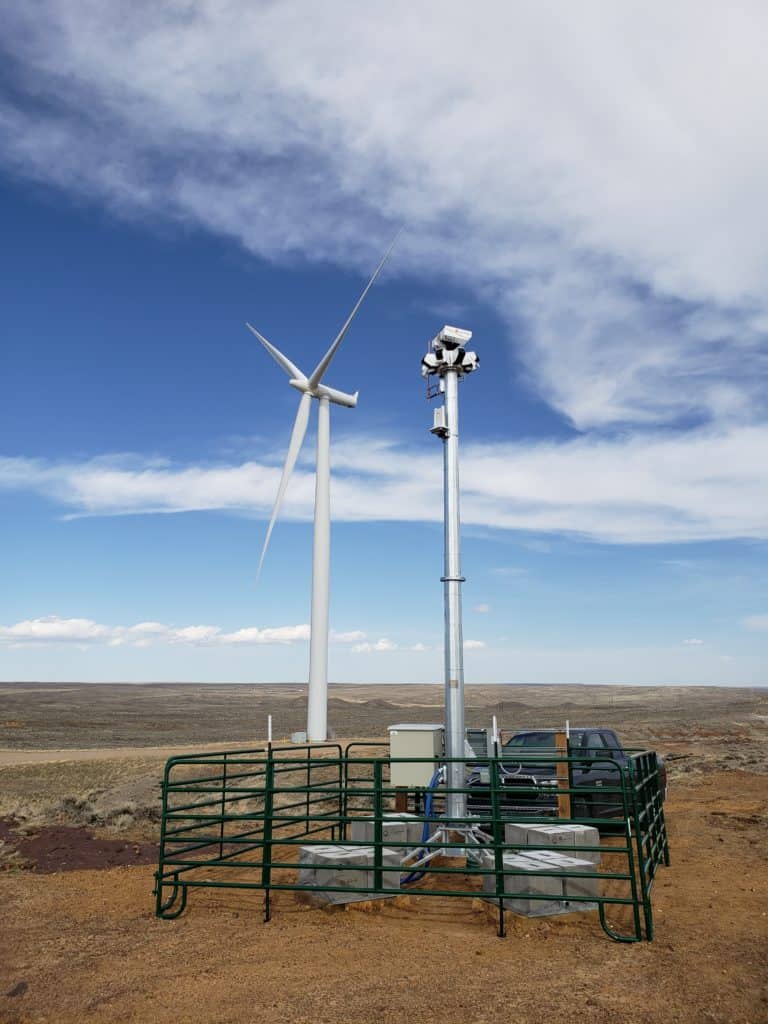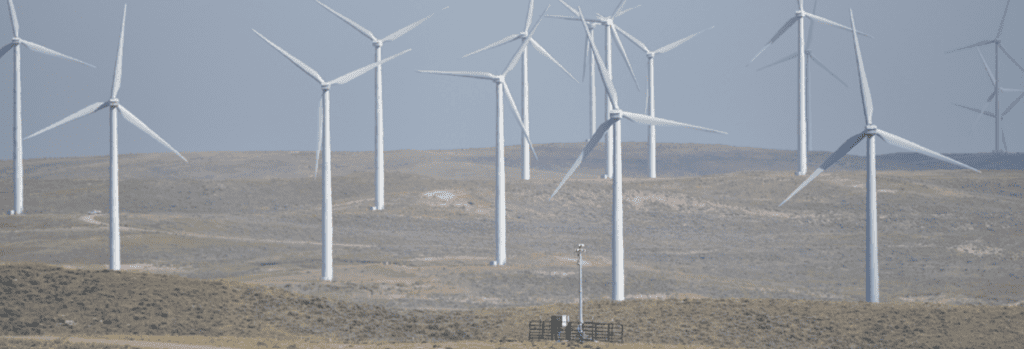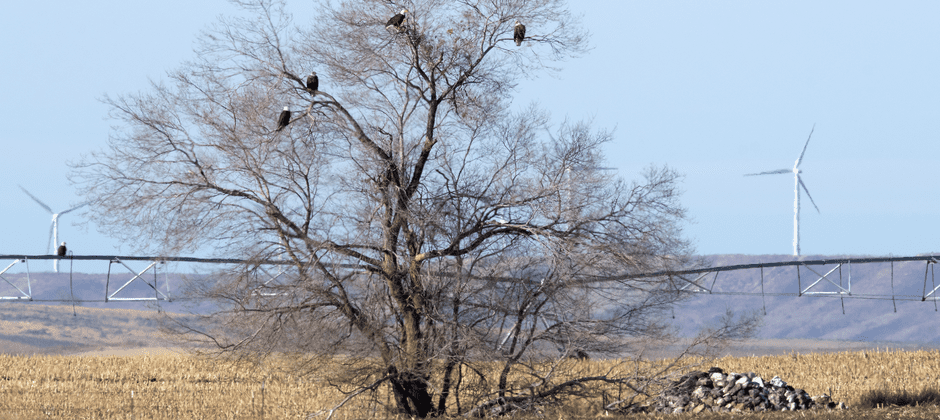Share this article
Detection device reduces eagle deaths at wind farm
Detection devices using cameras and artificial intelligence algorithms can reduce eagle deaths around wind farms.
“If [the device] calculates that the eagle is at risk of collision, it’ll shut down the turbine,” said Chris McClure, director of global conservation science at the Peregrine Fund, a raptor conservation organization.
As wind energy facilities increase around the world, studies have shown that the renewable energy generators can cause fatalities when eagles and other wildlife get struck by the blades. Some researchers are looking at using acoustics or other devices to deter bats from the machines, and others have developed a device that detects larger flying wildlife during the day and automatically shuts the turbines down.
The new devices, called the IdentiFlight system, involves a combination of eight cameras that record the area around wind turbines. Artificial intelligence algorithms programmed into an attached device can recognize large raptors. When the birds get too close to the turbines, the device will detect the raptors and automatically switch off a windmill in an attempt to mitigate the threat.

The IdentiFlight device at the Top of the World wind turbine farm in Wyoming. Credit IdentiFlight
Previous research had shown that cameras and artificial intelligence can properly detect large raptors. But scientists still weren’t sure whether turning off the turbines actually helped reduce deaths from collisions.
To determine if the devices were working, McClure and his co-authors of the study published recently in the Journal of Applied Ecology compared the success of the IdentiFlight system that was used at the Top of the World wind farm in Wyoming to the nearby Campbell Hill wind farm that didn’t use the devices. Golden eagles (Aquila chrysaetos) are the most common raptors around these areas, though turkey vultures (Cathartes aura), red‐tailed hawks (Buteo jamaicensis), ferruginous hawks (Buteo regalis) and common ravens (Corvus corax) also show up.
The researchers counted how many eagles had actually been killed at the sites, but also ran statistical models to determine how many might have died without detection, since scavengers might eat their carcasses before they’re discovered.
Based on their analysis, they found that the number of birds killed dropped by 60% at the Top of the World facility after they had installed the IdentiFlight system. Meanwhile, the number of deaths actually increased at Campbell Hill during the study period, possibly due to a higher population of eagles being around at the time.

Top of the World wind farm with an IdentiFlight system in the center foreground. Credit IdentiFlight
Comparing the two wind farms, McClure said that Top of the World saw 82% fewer eagles killed compared to Campbell Hill. This boiled down to a seven eagle deaths per year at Campbill Hill compared to only two at Top of the World.
While McClure said this is good news for the raptors, turning off the windmills so often could potentially decrease the efficiency of the wind farms. He said that future studies will examine whether shrinking the safe zone in which the IdentiFlight devices prompt the shutdown of turbines will result in more deaths.
“Wind power and raptor conservation are becoming more compatible as technology advances,” he said.
Overall, he said the success of the device doesn’t mean that prospective wind generation sites should just be built anywhere. Wind generation sites should still try to avoid raptor hot spots to decrease the chances of raptor deaths, he said.
“This isn’t some panacea — it doesn’t mean that we can start plopping wind farms down anywhere,” he said.
Click here to read TWS’ Issue statement on the Impacts of Wind Energy Development on Wildlife and Wildlife Habitat.
Header Image: Bald Eagles near a wind turbine field in Idaho. Credit: Munir Virani








